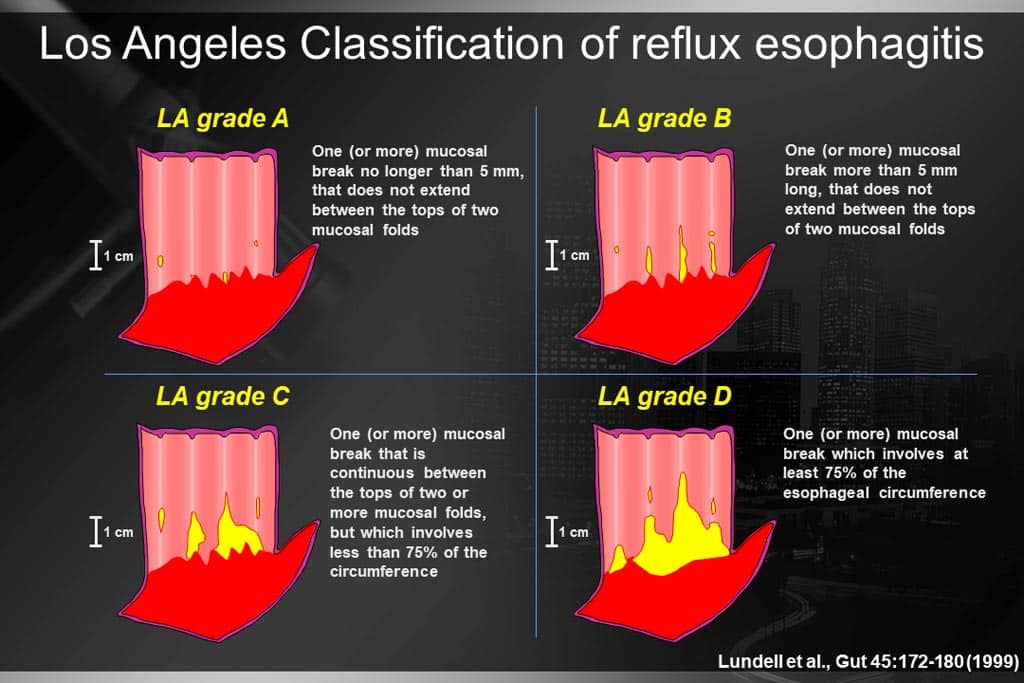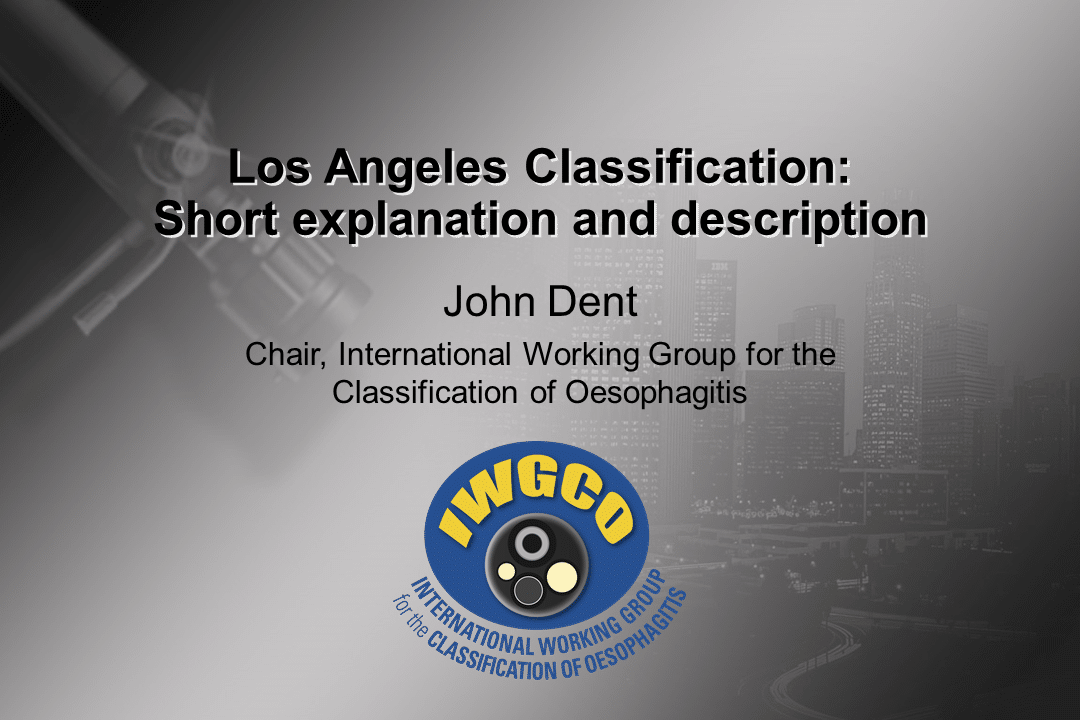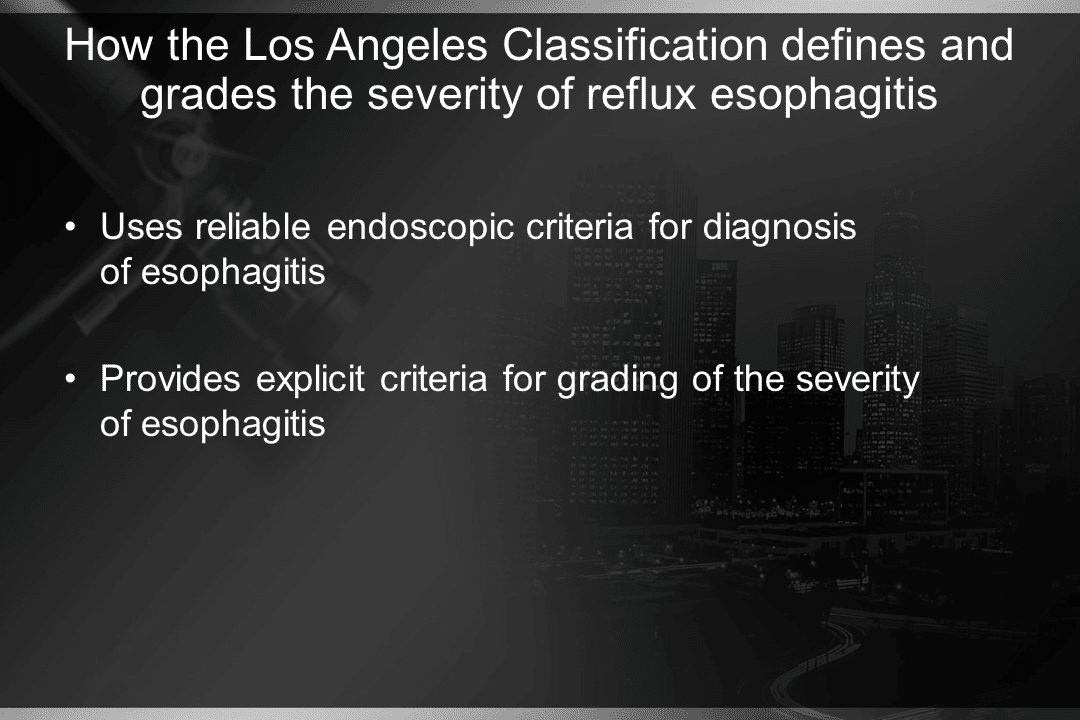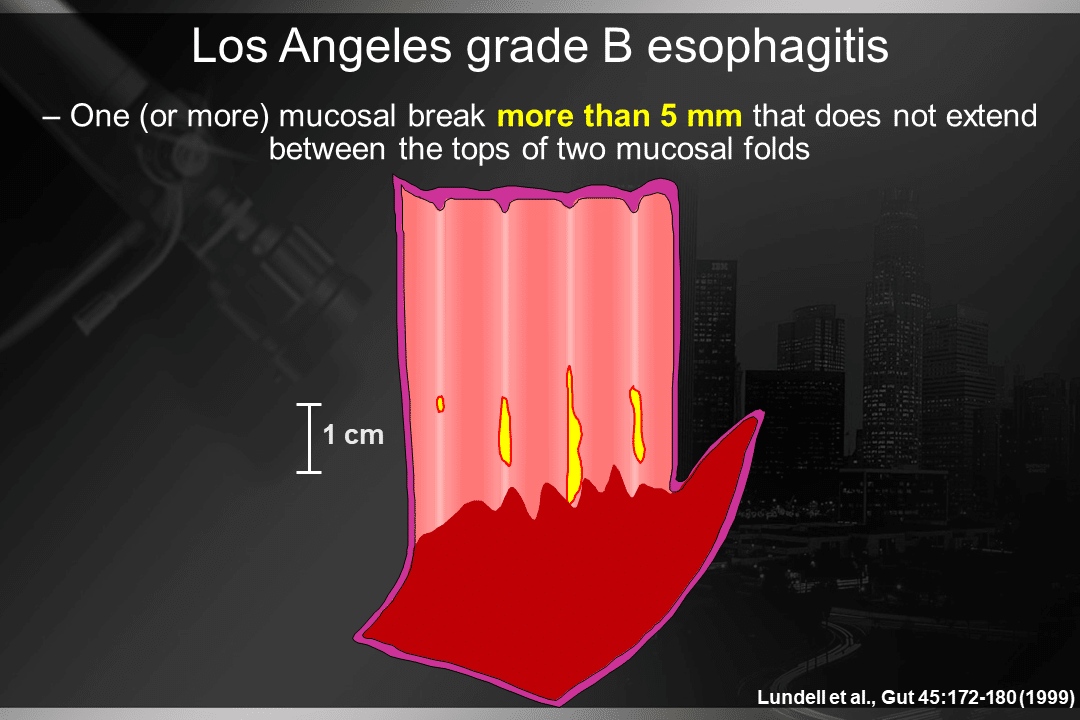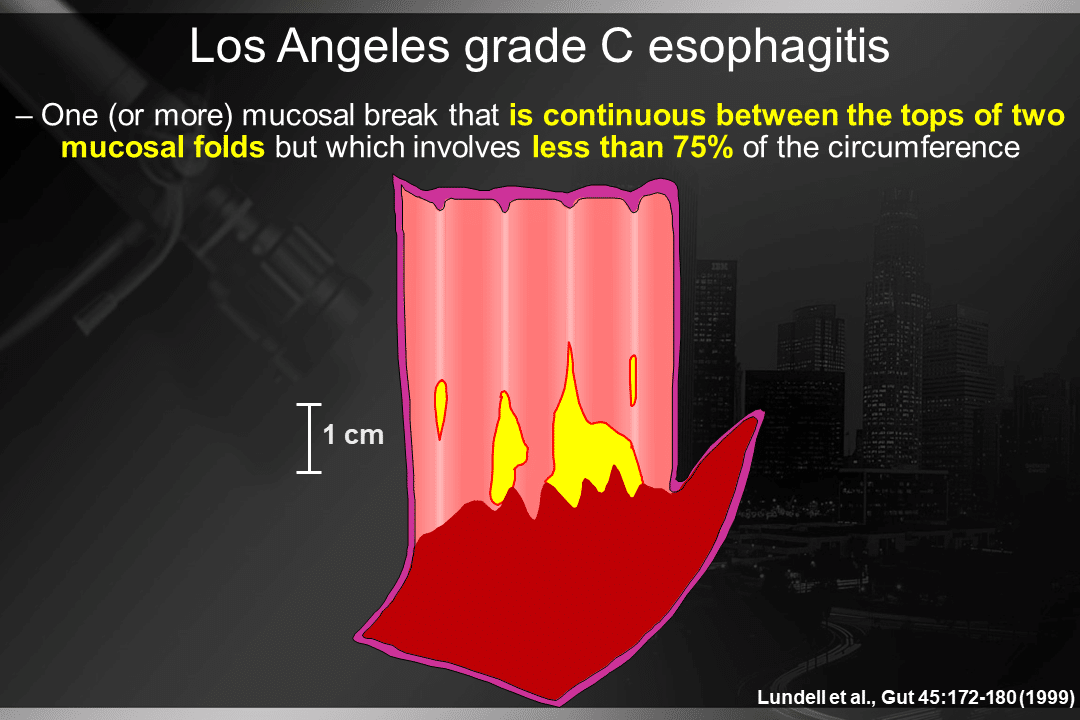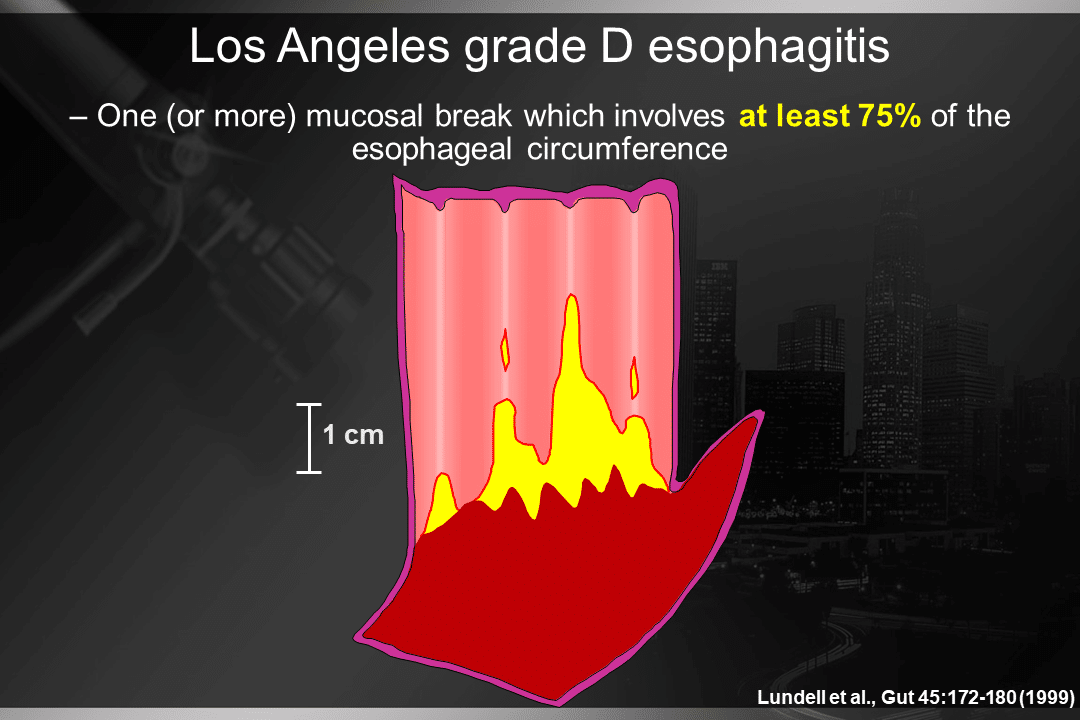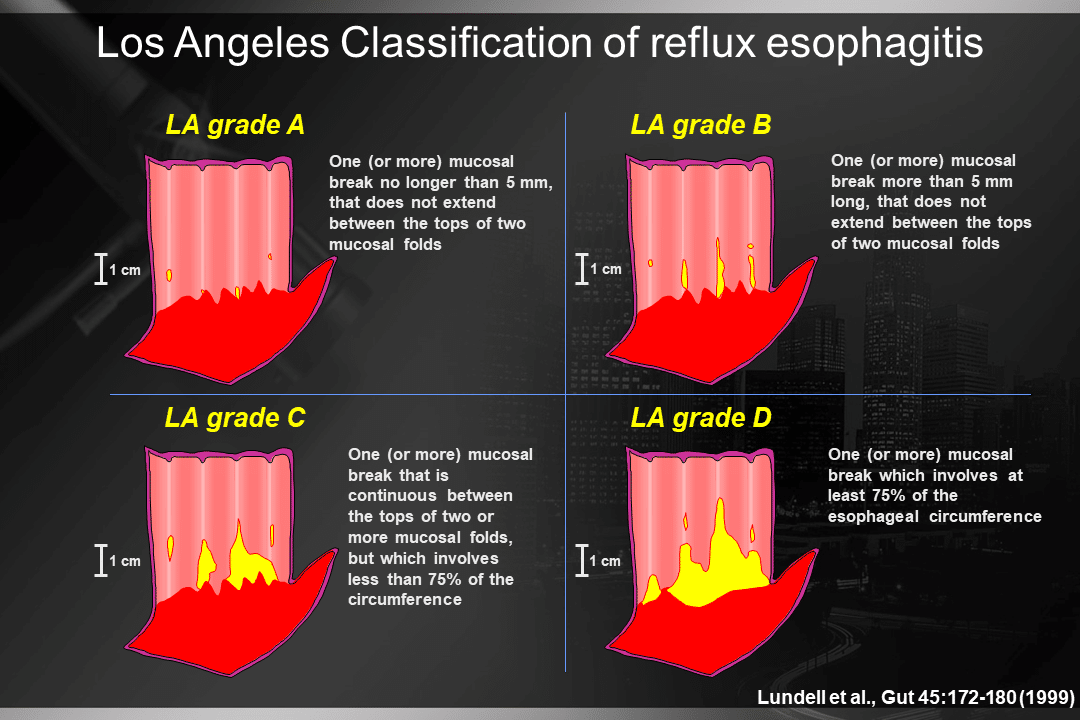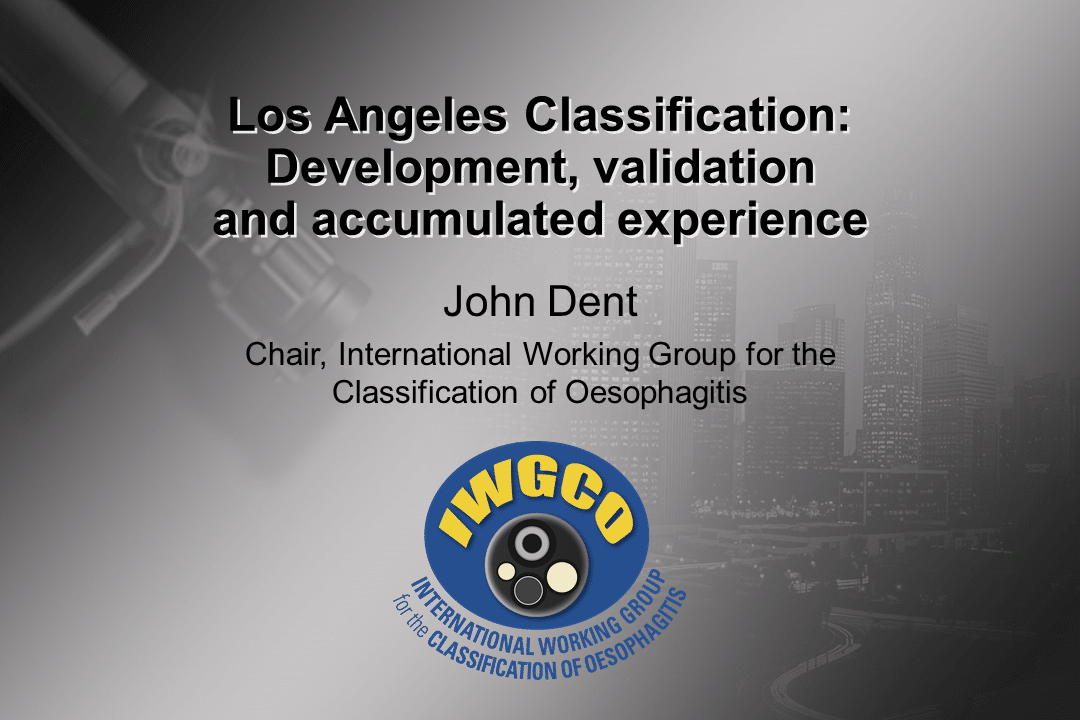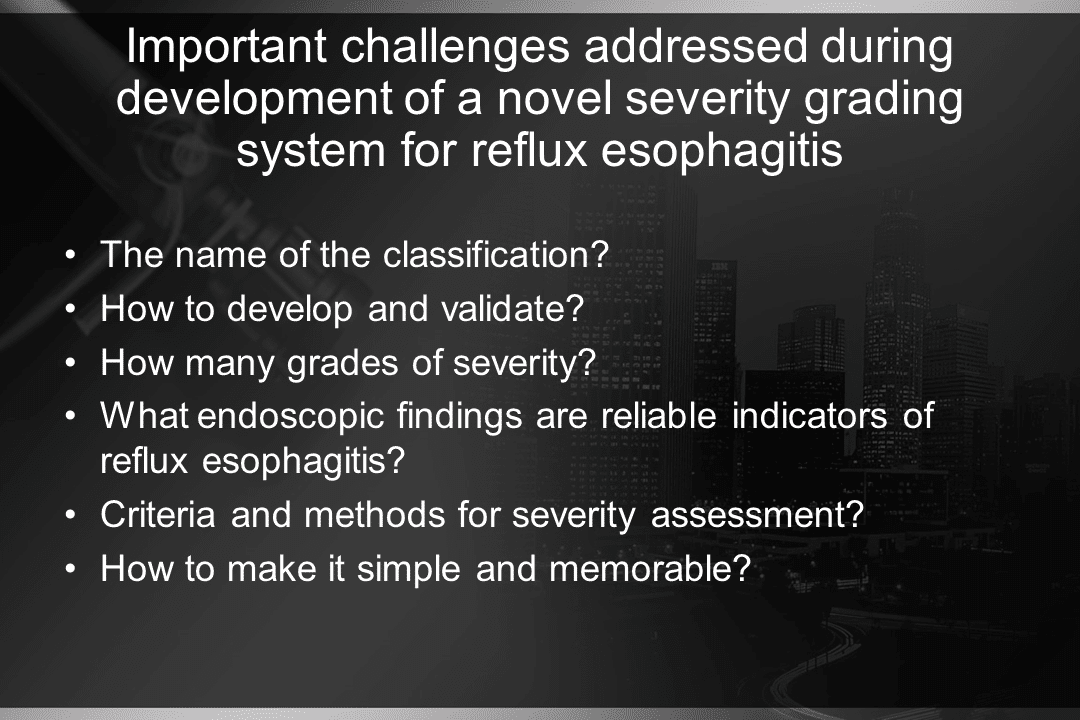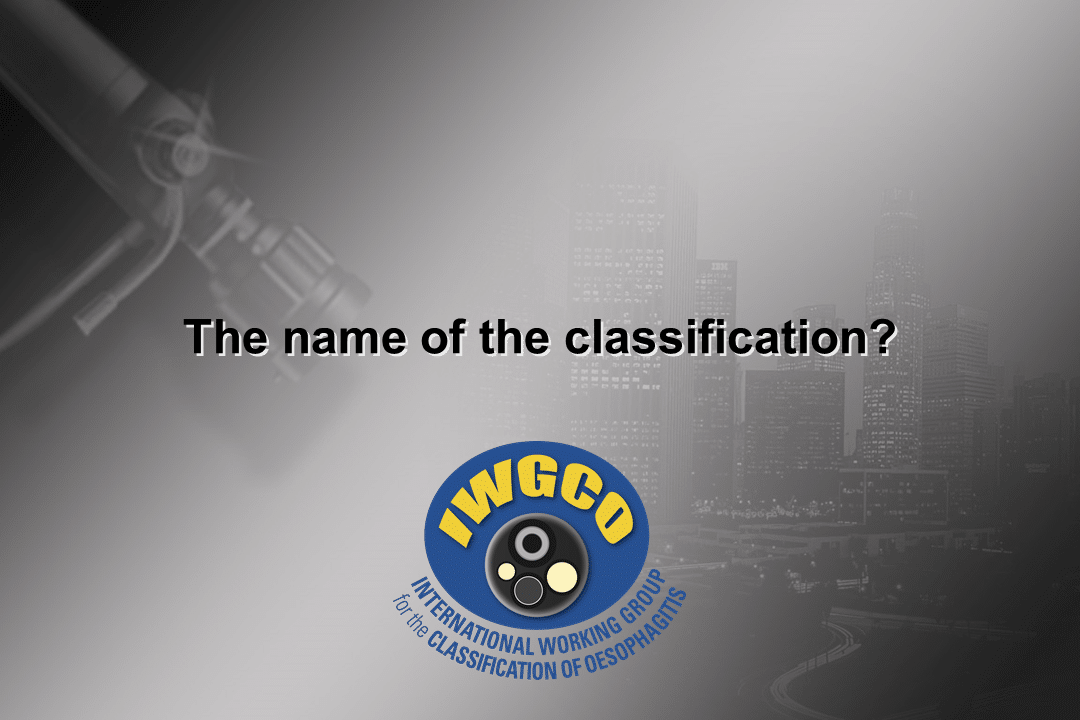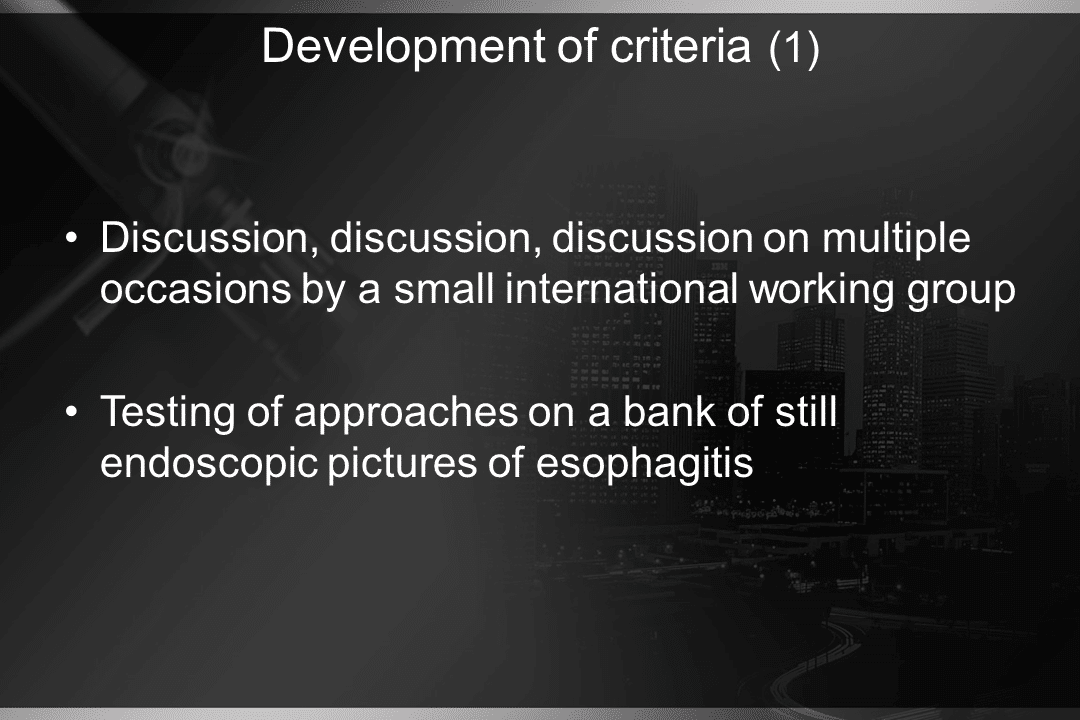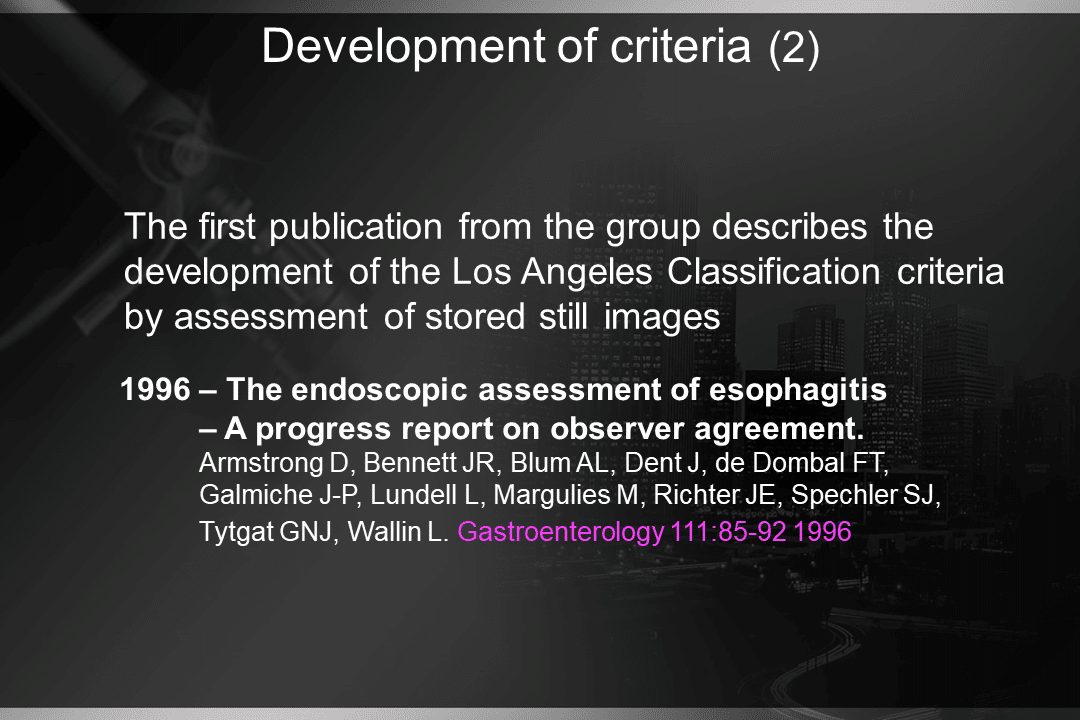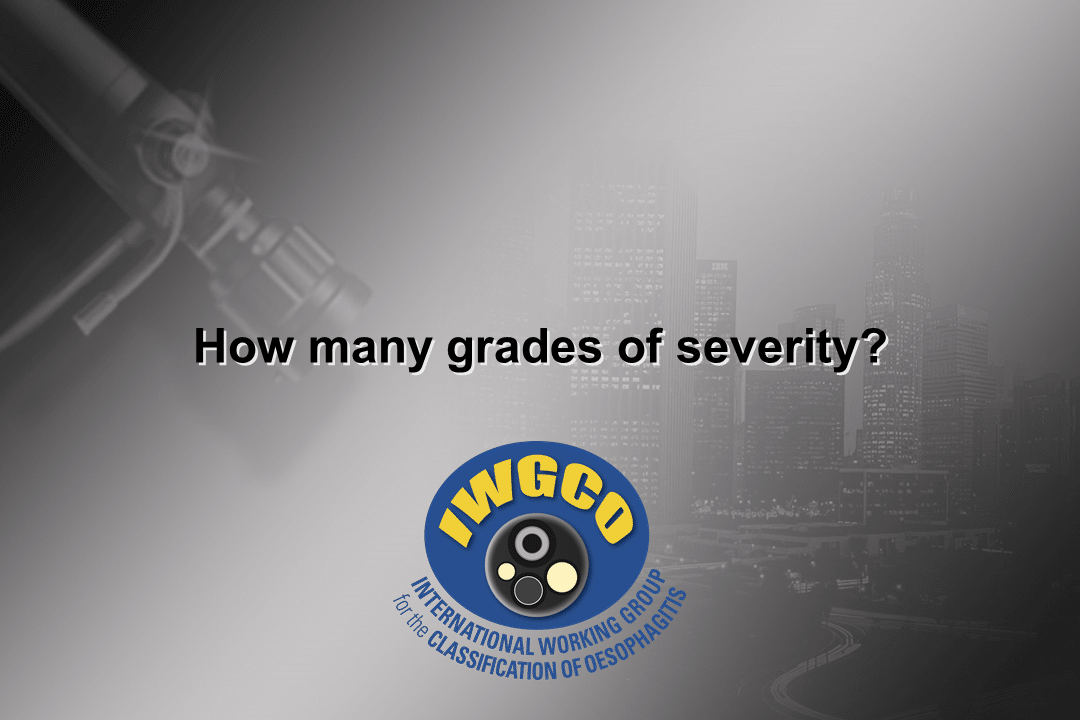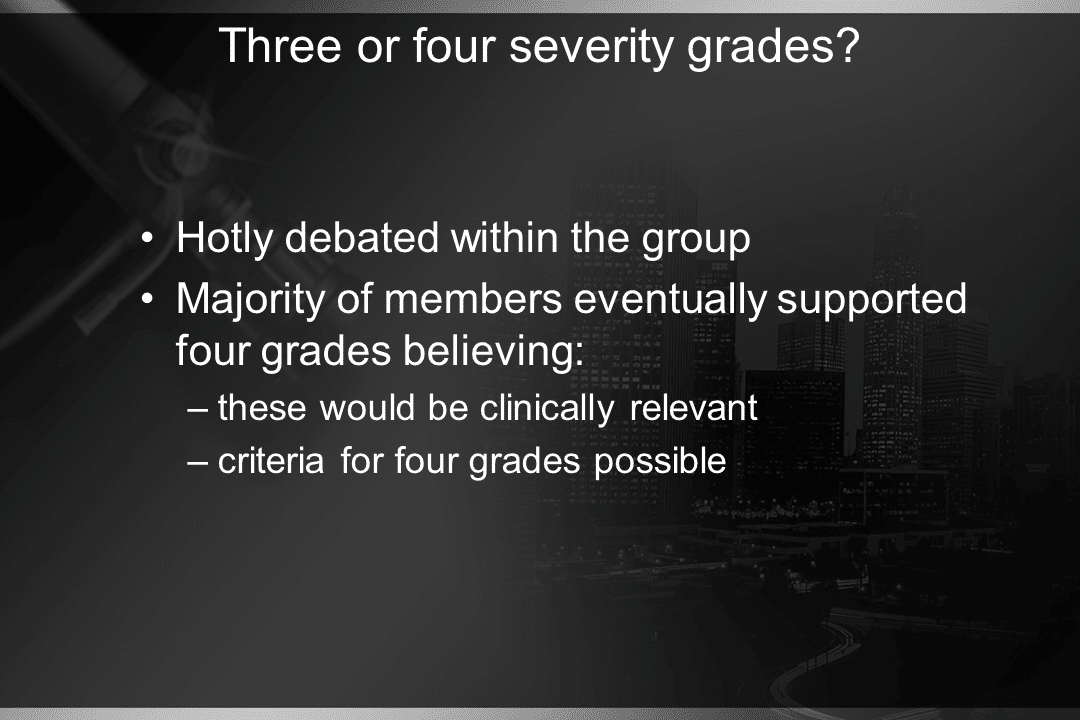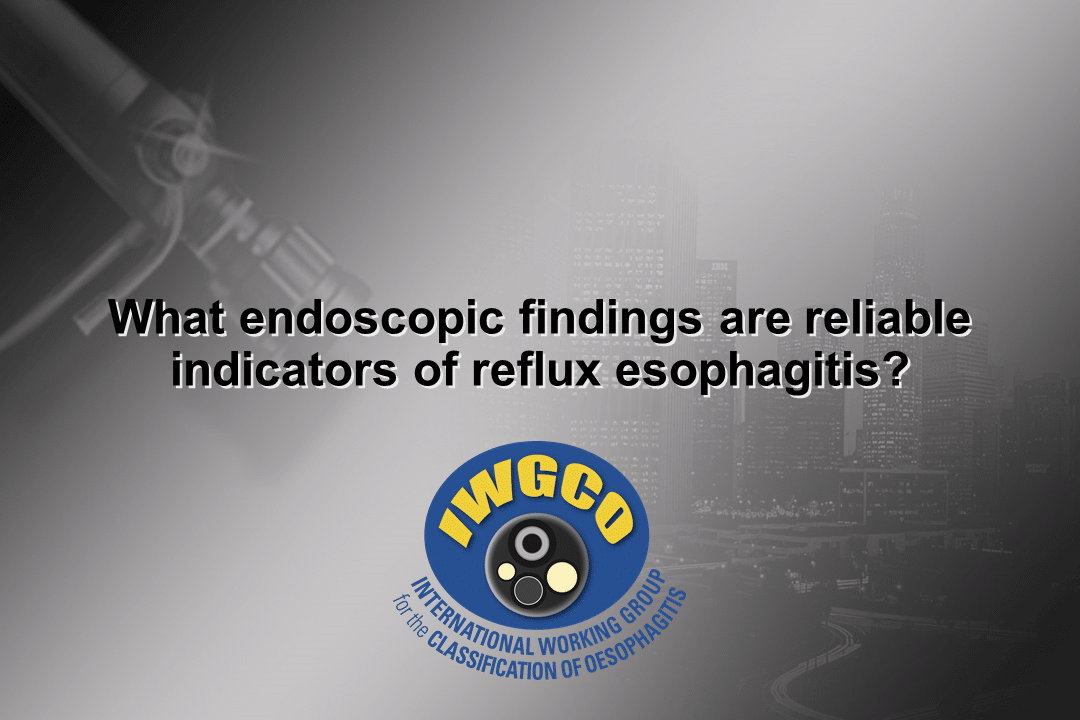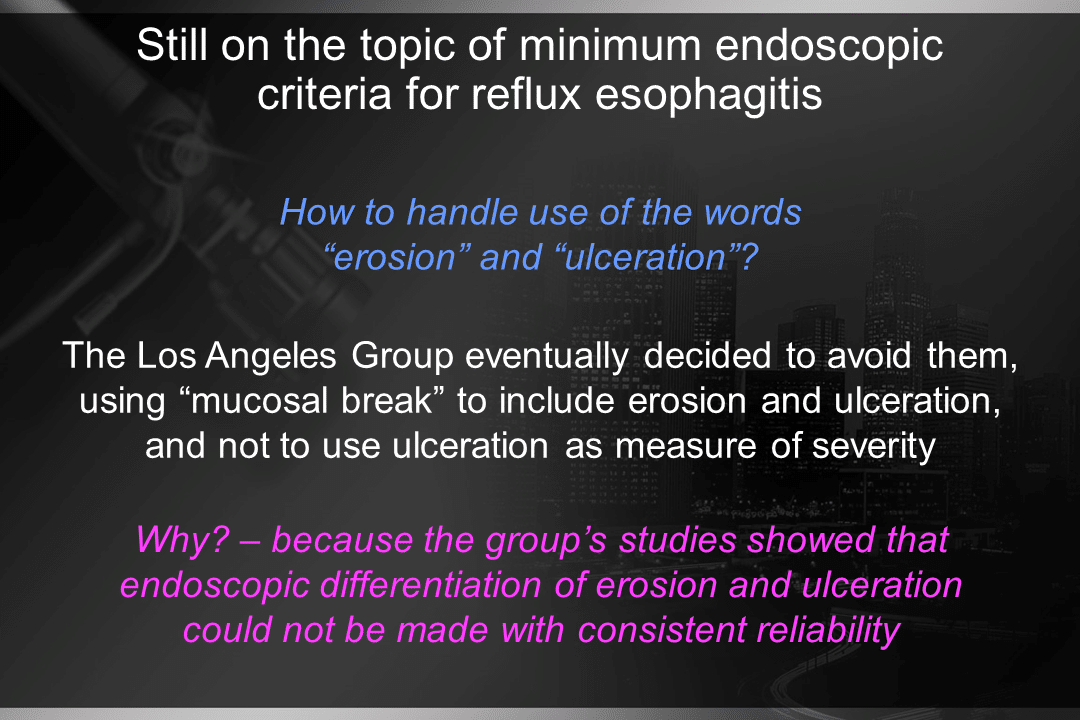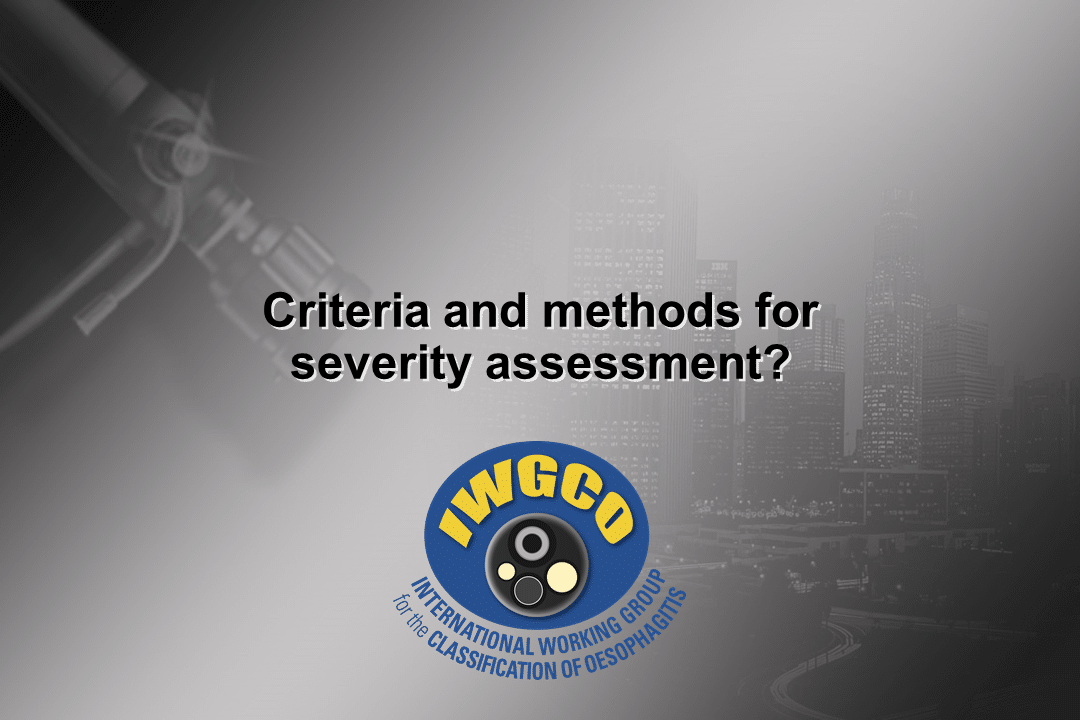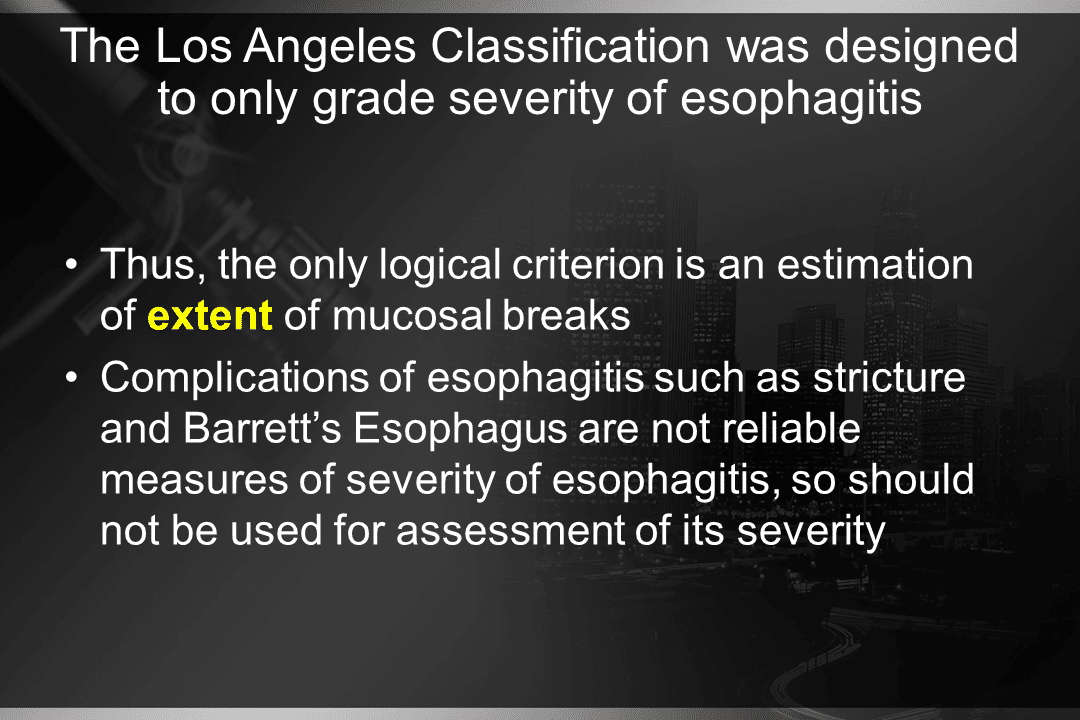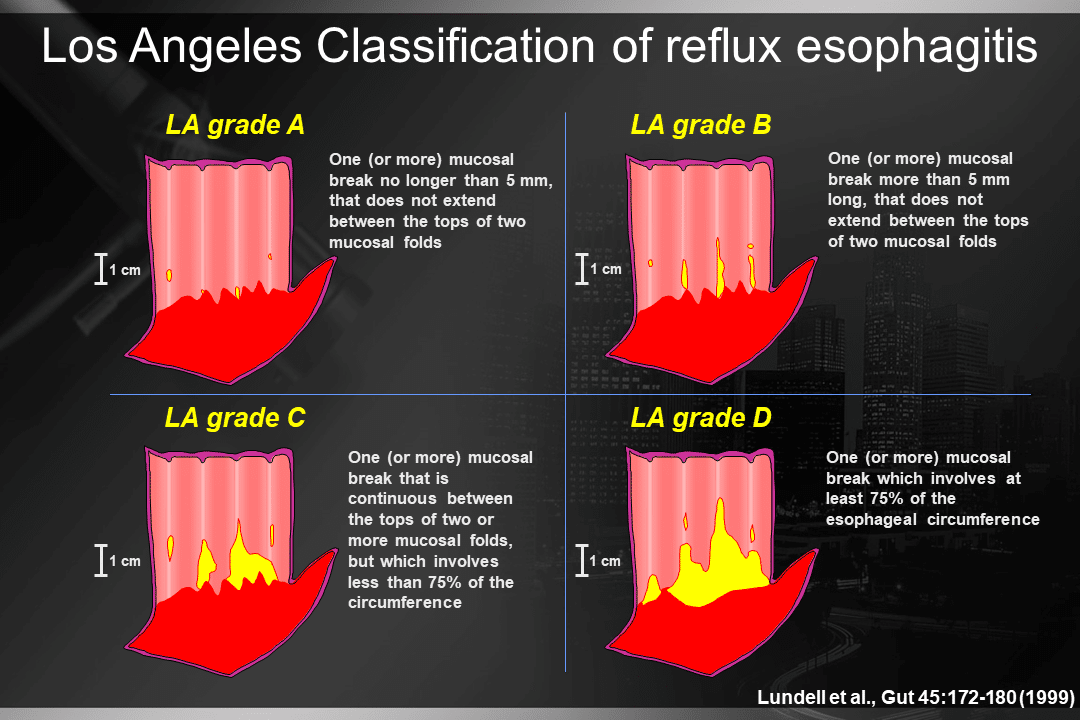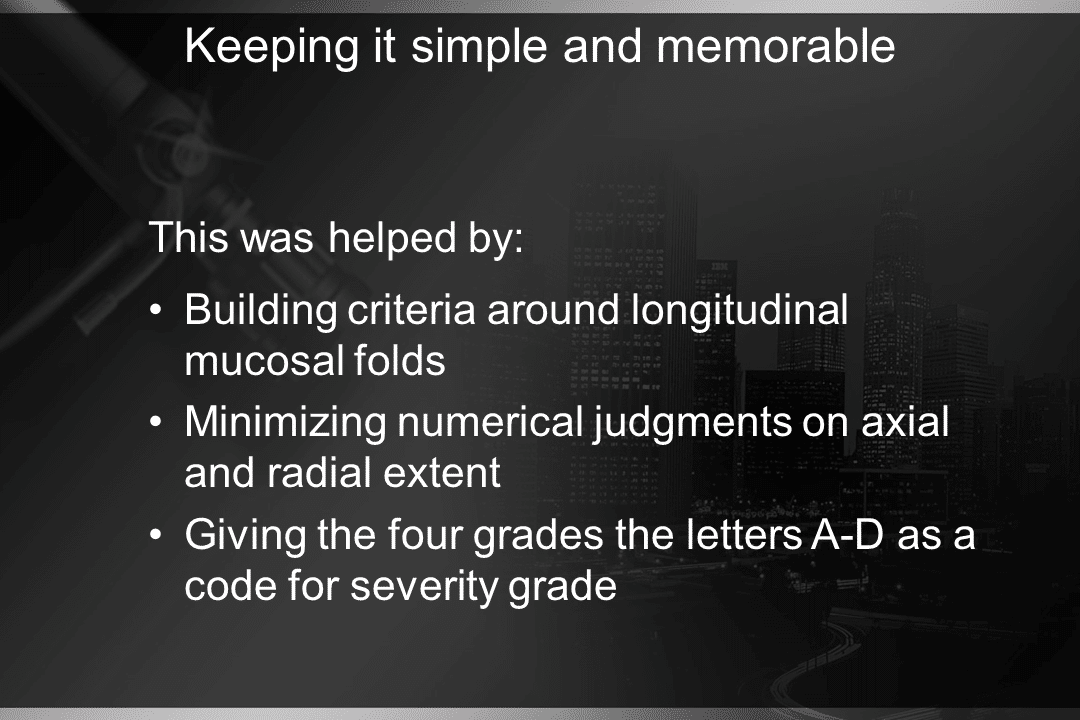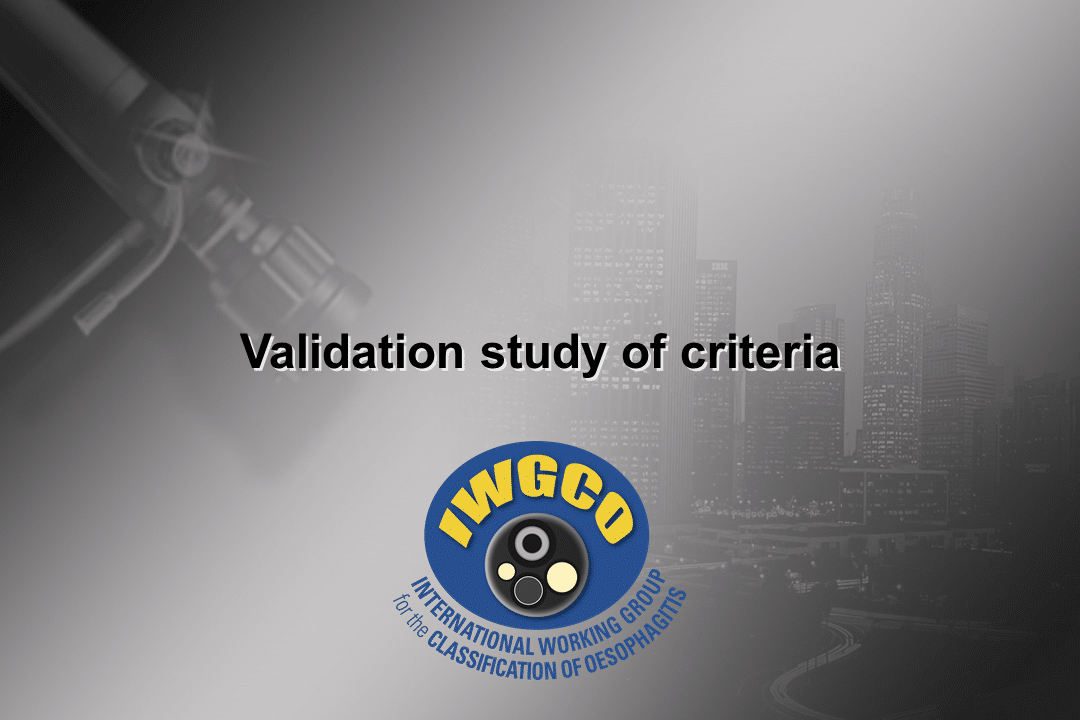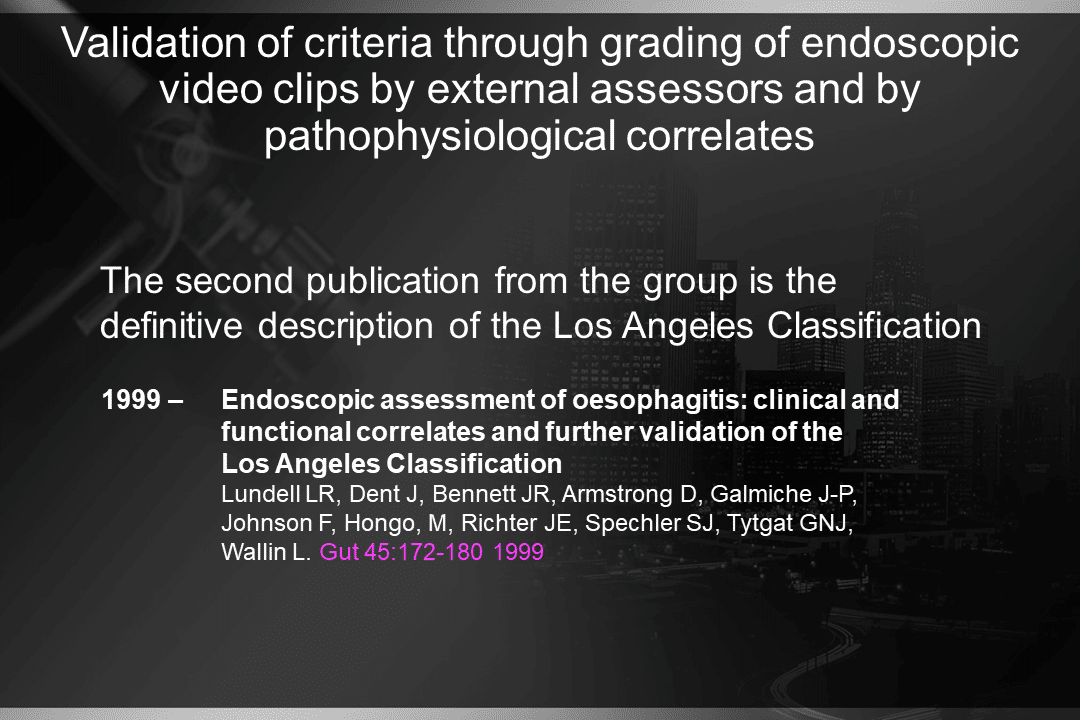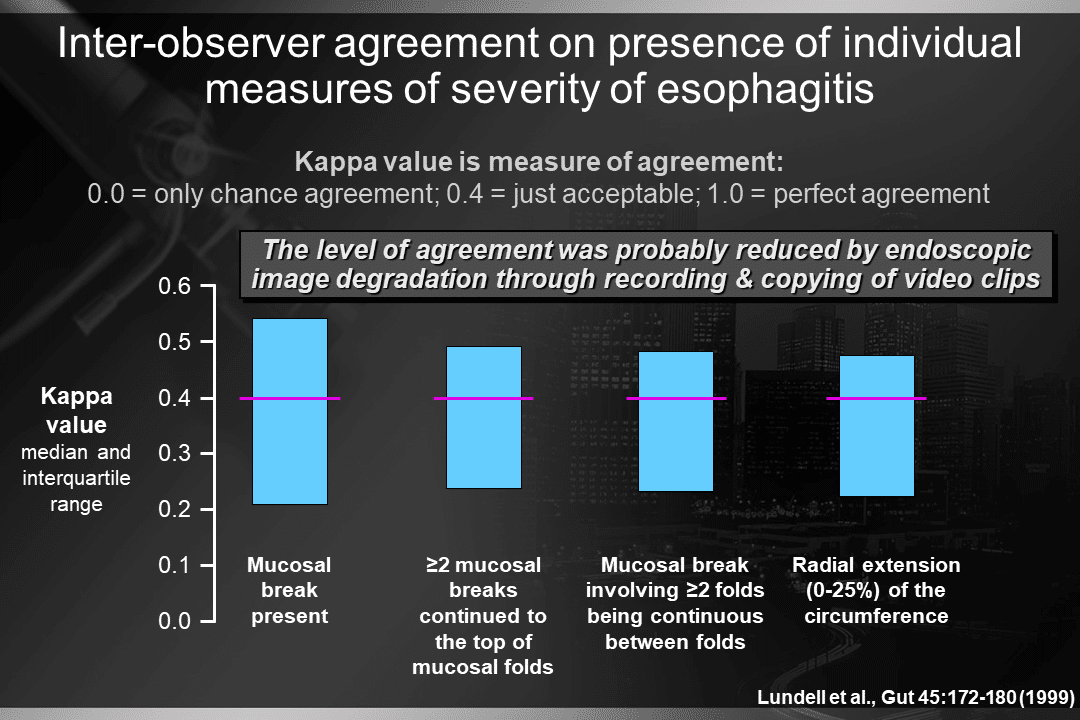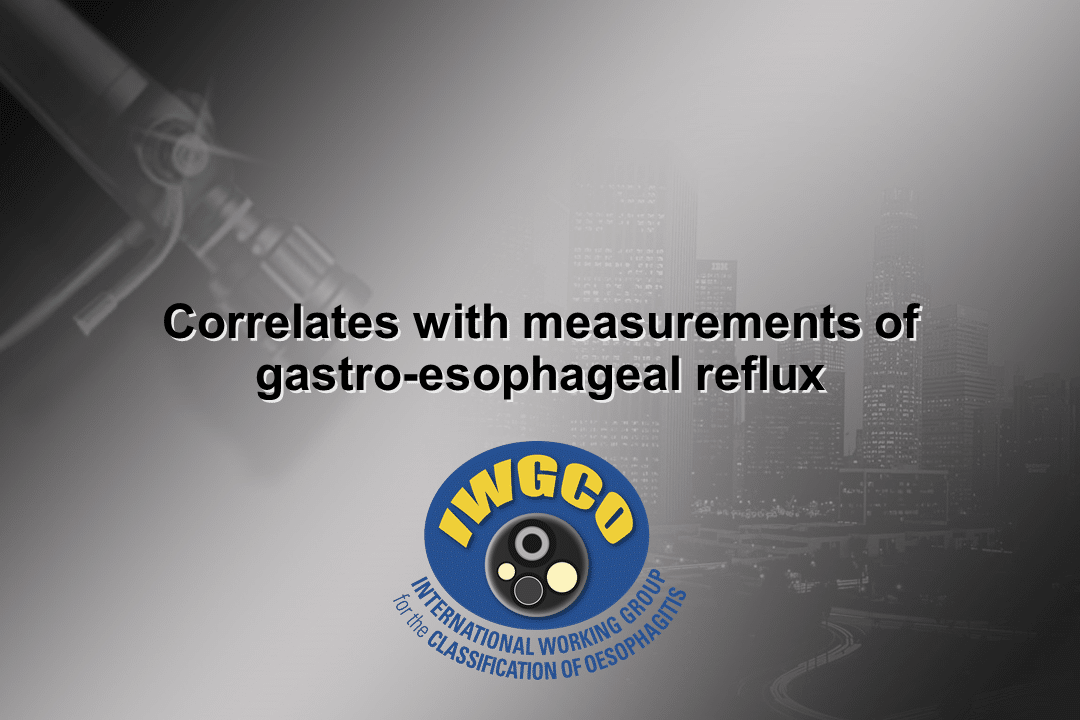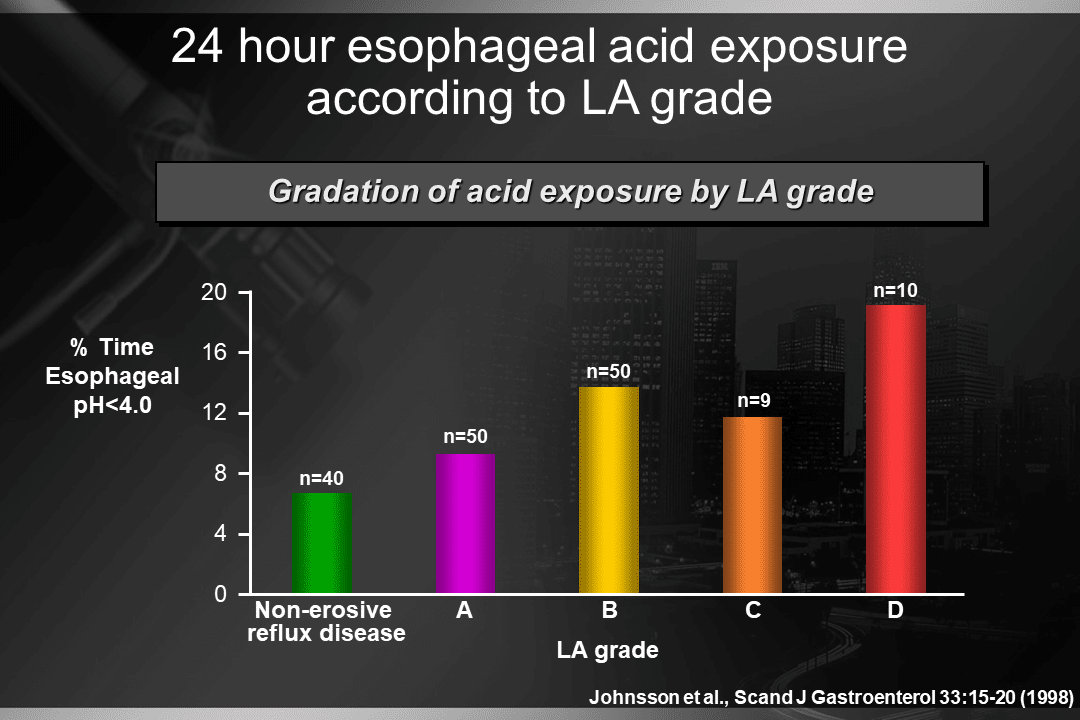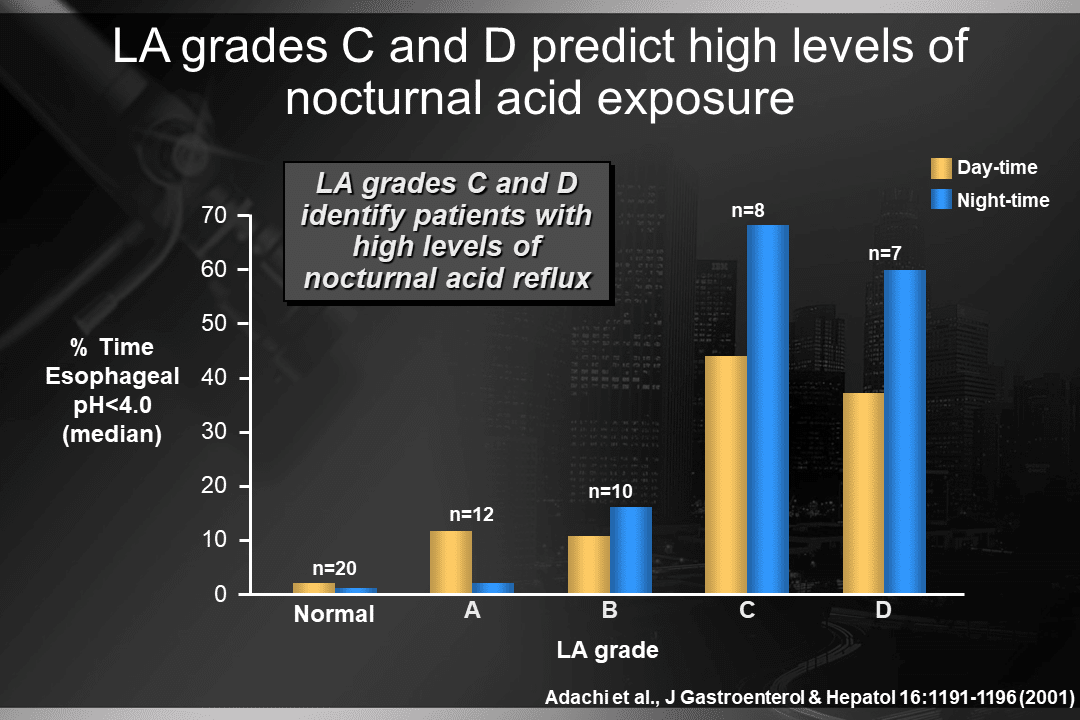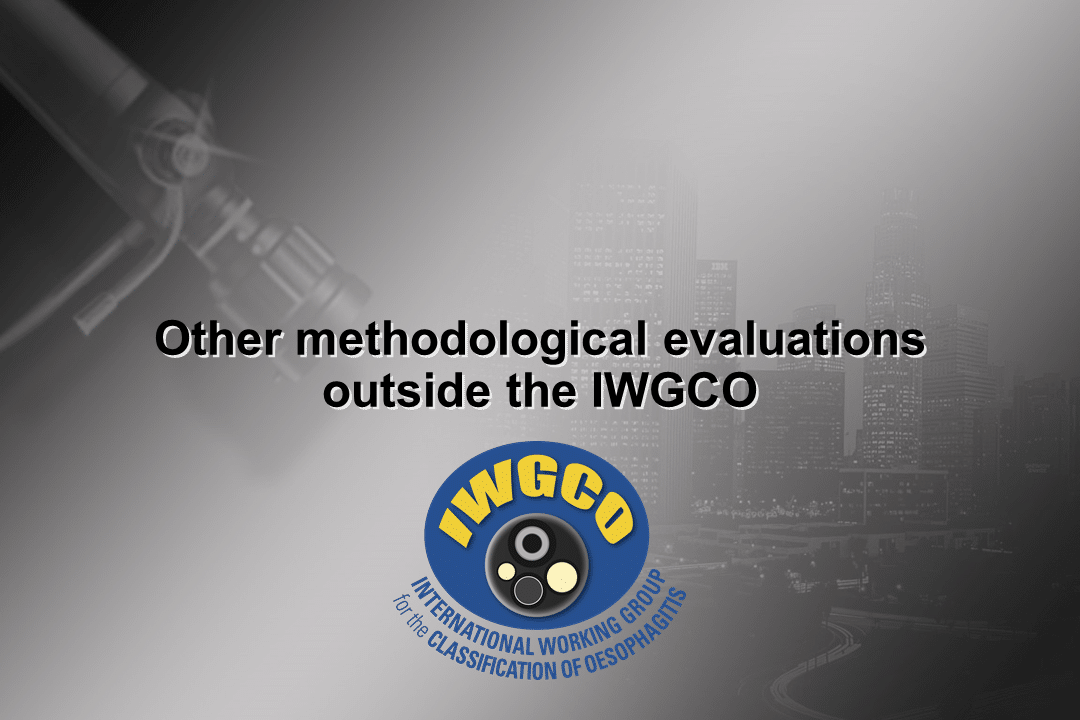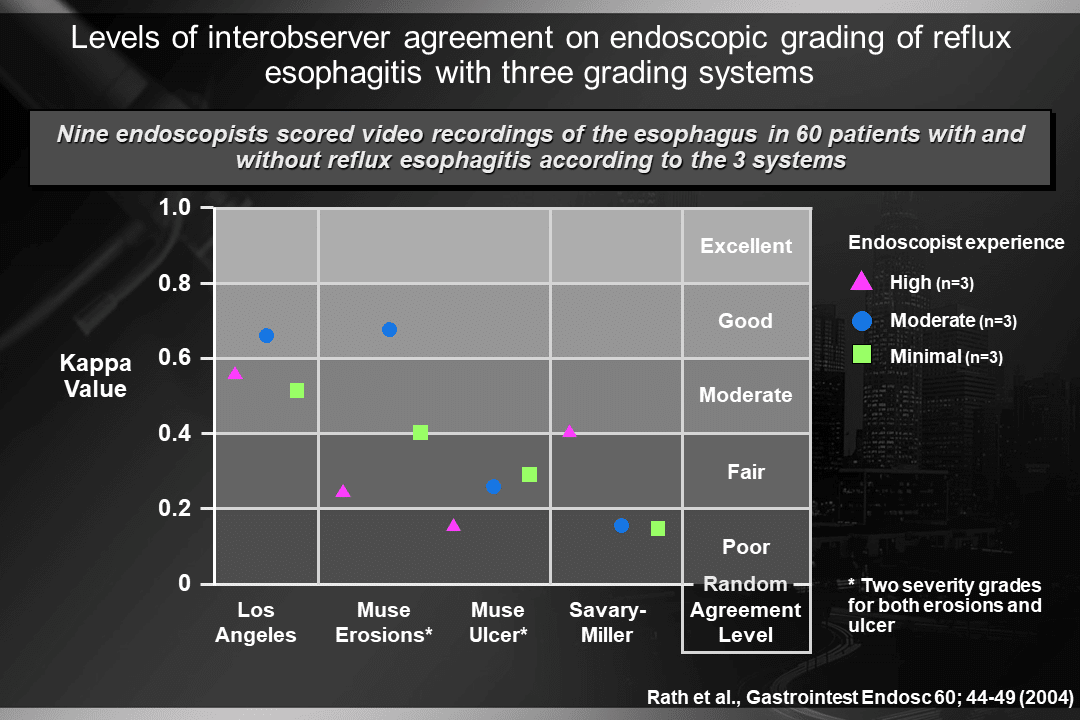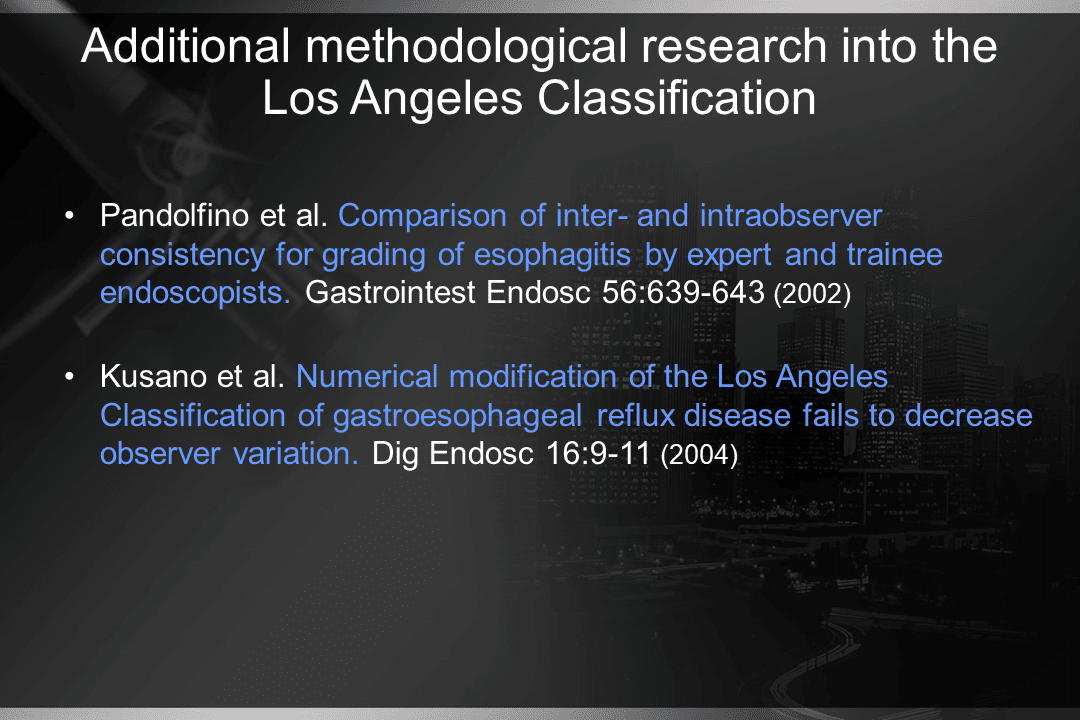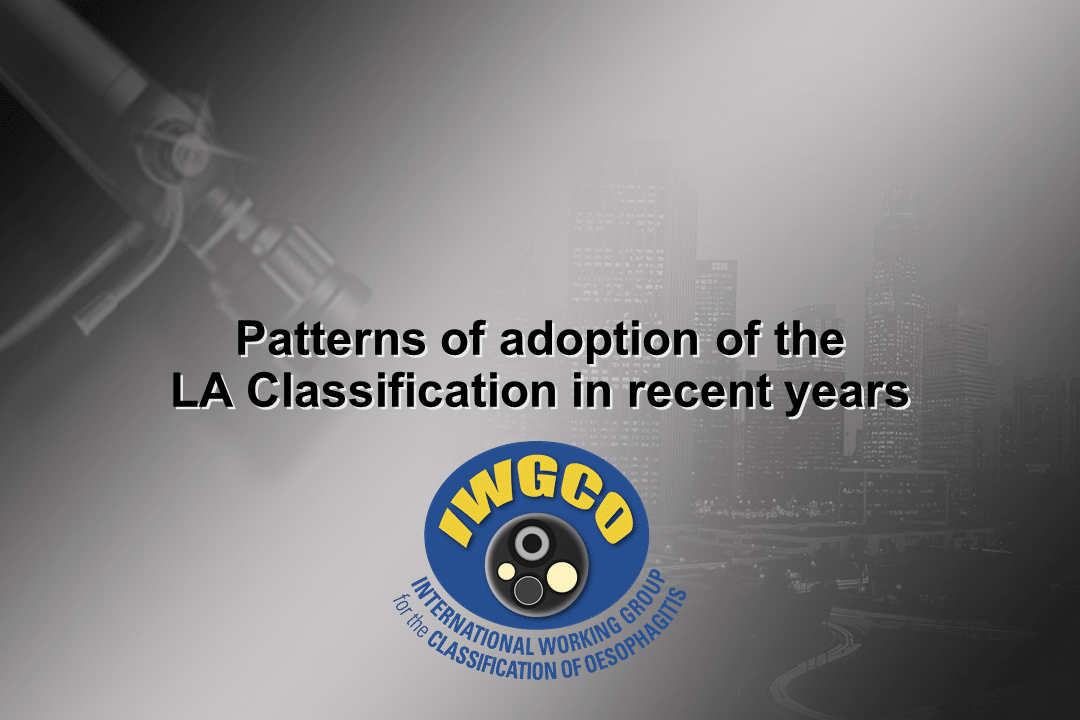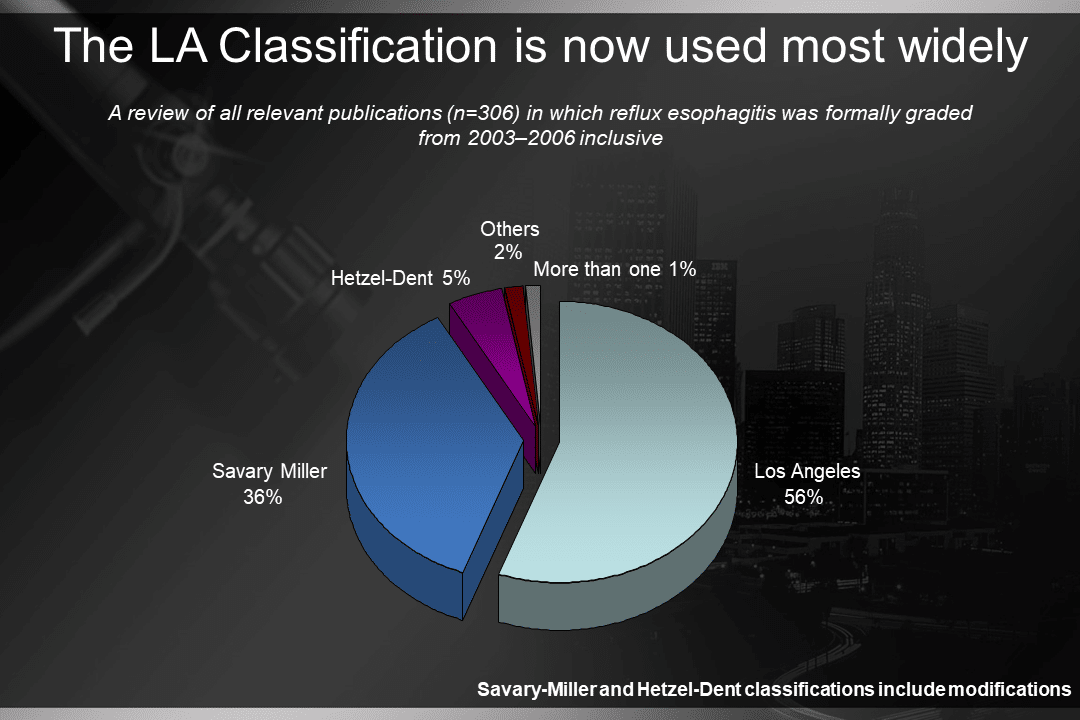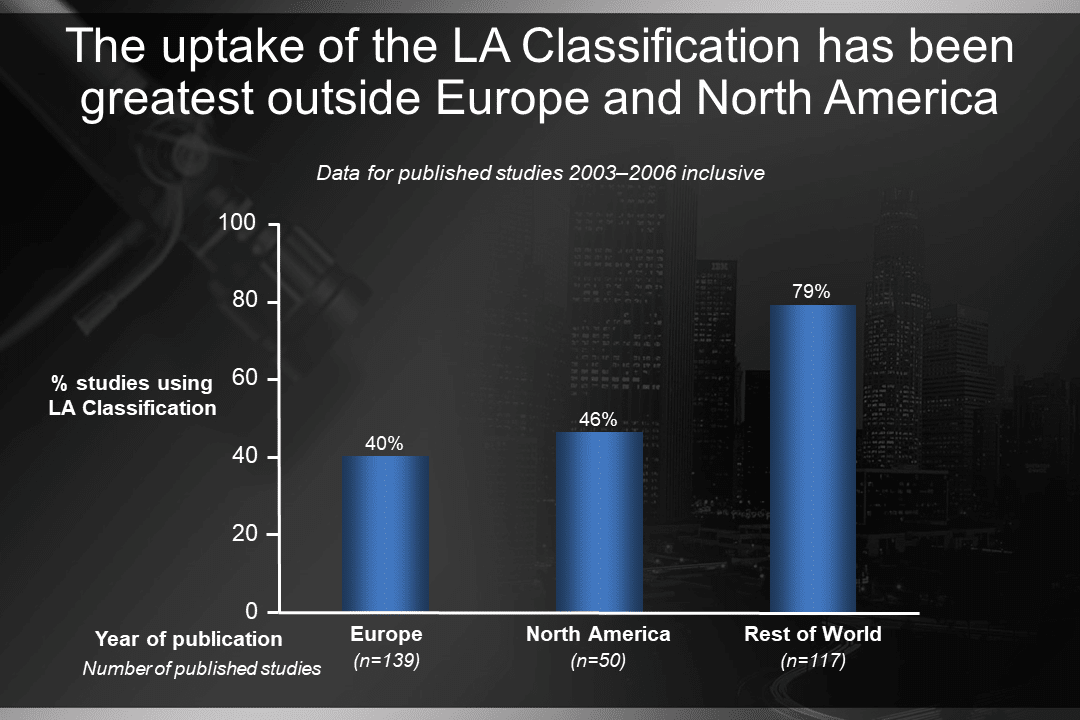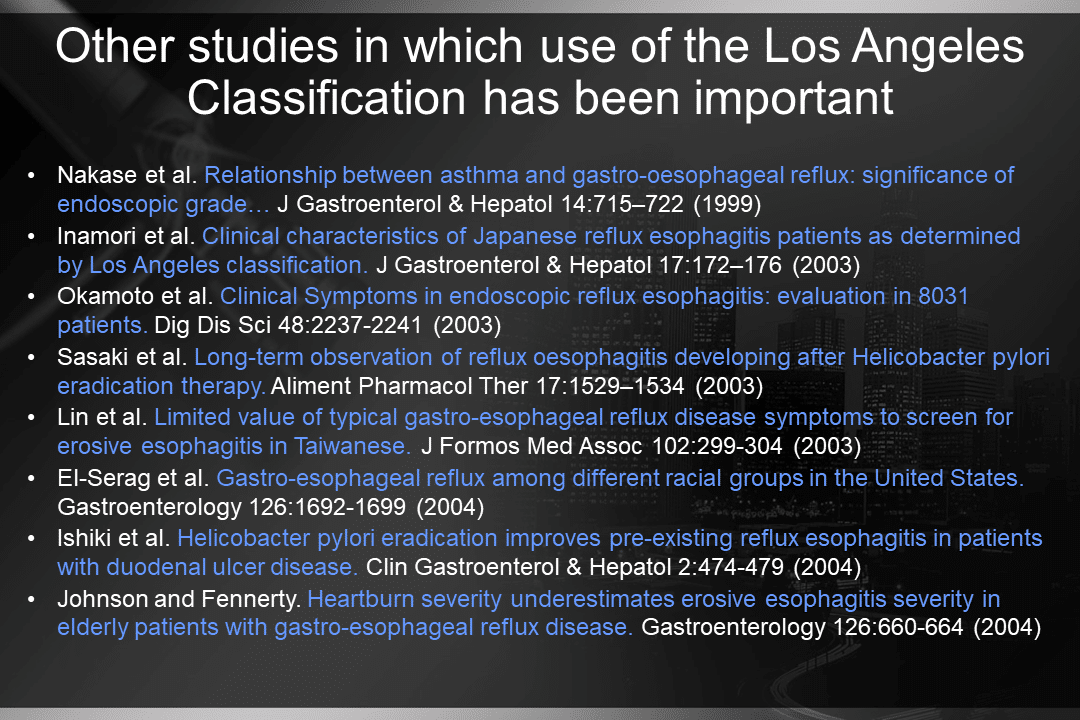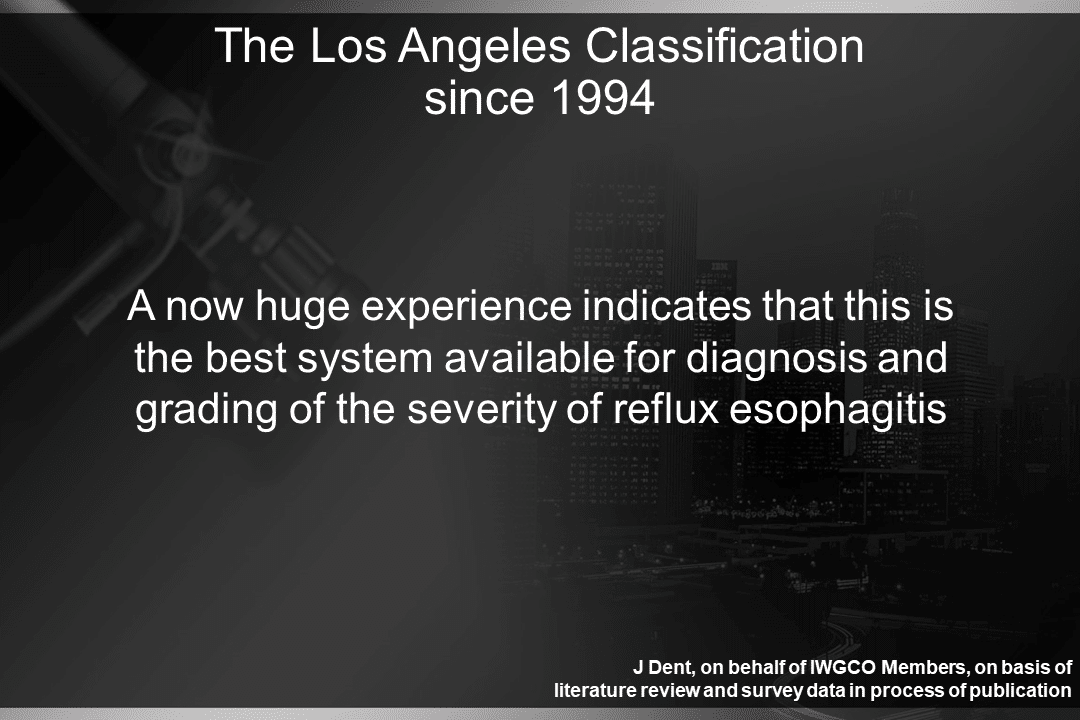The Los Angeles Classification1Armstrong D, Bennett JR, Blum AL, Dent J, De Dombal FT, Galmiche JP, Lundell L, Margulies M, Richter JE, Spechler SJ, et al. The endoscopic assessment of esophagitis: a progress report on observer agreement. Gastroenterology. 1996 Jul;111(1):85?92. for severity grading of reflux esophagitis was so named because it was first presented by the IWGCO at the 1994 Los Angeles World Congress of Gastroenterology.
The two primary validation studies were published in 19962Ibid. and 19993Sharma P, Dent J, Armstrong D, Bergman J, Gossner L, Hoshihara Y, Jankowski J, Junghard O, Lundell L, Tytgat G, Vieth M. The development and validation of an endoscopic grading system for Barrett’s esophagus – the Prague C and M criteria. Gastroenterology 2006;131:1392-1399..
So-called “minimal changes” are not included in the LA Classification because endoscopists are unable to recognise these changes with acceptable agreement.
The extent of mucosal breaks due to either erosive or ulcerative esophagitis is the sole determinant of each of the four severity grades.
Extent is judged primarily by the radial pattern of mucosal breaks, using the longitudinal esophageal mucosal folds as landmarks, as shown in cartoons (see the LA Classification Poster).
LA Classification Poster
The LA Classification has been adopted widely and is the most commonly used esophagitis grading method in clinical practice and original research publications.

